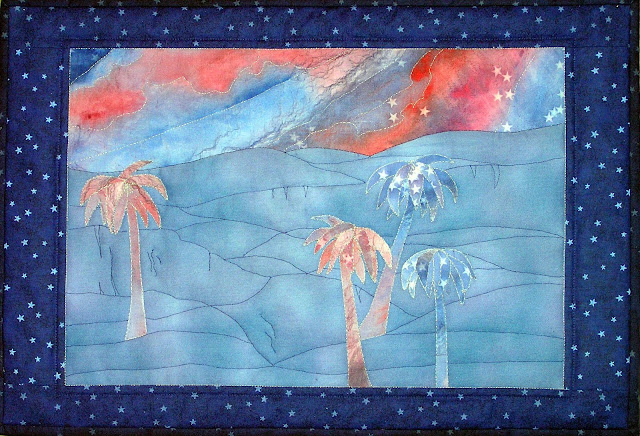April 2017
It can’t always be about quilting. I know.
It’s a travesty. It ends up being
necessary to put everything in life into one of two categories:
- Category 1: Quilting
- Category 2: Not Quilting
Category 1 takes in all quilt related activities including
thinking about quilts, talking about quilts, reading about quilts, and actually
occasionally making quilts.
Category 2 takes in, well, everything else, including
eating, sleeping, and painting the kitchen.
Ugh.
Category 1 is quite elastic and can be stretched to include
sewing if the item in question can be somehow related to quilting. For example, sewing pyjama pants is a
quilting activity, since sometimes I wear them while I’m quilting. Sewing to repair clothing falls into Category
2, as it is an essentially nasty pursuit that misuses time that could be more
appropriately devoted to Category 1.
Watching the TV series The
Great British Sewing Bee is a Category 1 activity. This show is a low calorie version of The Great British Bake Off. I had to abandon watching that one after I
dragged the TV into the kitchen so that I could commune with the chocolate
chips during the show.
They don’t do any quilting on The Great British Sewing Bee, but it does cover a lot of the same
skills that quilters use. I’ve completely fallen under its spell. It’s the stitchery equivalent of Survivor – 10 sewing enthusiasts duke-ing
it out for top dog status. One person
must leave “the sewing room” each episode.
At this point, the moderator who makes the announcement chokes back
tears. The sewing contestants all cry,
and I sob inconsolably into the arm of my leather chair.
As the GBSB camera wandered from table to table, it became
evident to me that all the cool kids had huge and amazing pincushions they had
made for themselves. The one that made
me whimper with envy was the dachshund.
Who doesn’t love this adorable unpronounceable and un-spellable breed of
hound? The beloved “wiener dog”! I wanted my very own wiener
dog pincushion.
I currently keep all my pins in a dish on my psychotically
cluttered quilting table. I rarely have
a session at the table where I don’t knock this dish onto the floor, strewing
the contents all the way to the house next door. It’s become a ritual that I’ve learned
to endure. Picking up all those pins
every day is keeping me flexible. My fine motor skills are top notch. I
could get one of those magnetic pin dishes, but then the pins get magnetized and my
scissors become an unusable porcupine-like object. Un-clamping magnetized pins is worse than a
crawl around the carpet and has no therapeutic value whatsoever. But... a
pincushion that doubles as a cute animal companion? That struck me as the ideal solution.
I easily found the free
pattern for Dave Dachshund at Sew
magazine. It wasn’t too complicated. I even managed
to avoid being dissuaded by the word “gusset”.
(It’s on my list of Hated Words).
Within a single day, Dave was lolling on my quilting table and radiating
advanced cuteness. I couldn’t actually
stick any pins in him though. My
Facebook friends (pet lovers all) were quite vocal about implementing a
“no-stab” rule for Dave. I didn’t have
the heart to point out that Dave is made of cotton and lacks a nervous
system. So the pins have stayed in the
dish, and Dave has been put in charge of it.
And to his credit, he’s only spilled it twice.















